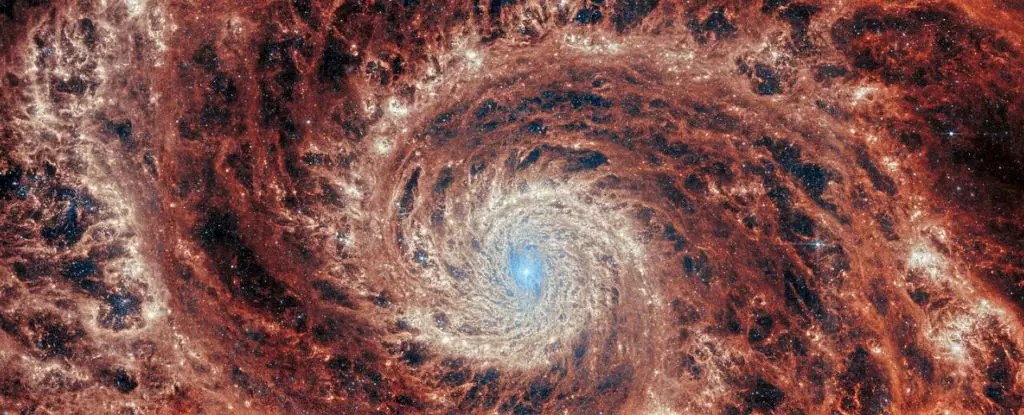The cosmos has always fascinated humanity, not only for its vastness but also for the intricacies it holds within its depths. Among these complexities are galaxies, the magnificent collections of stars, gas, dust, and dark matter that adorn our universe. A recent observation by the James Webb Space Telescope (JWST) has cast a new light on our understanding of galaxy formation, particularly regarding the extraordinary spiral galaxies formed shortly after the Big Bang. This discovery, centered around a galaxy named Zhúlóng, can compel us to rethink the timeline of cosmic evolution and the conditions that foster such structures.
The JWST, a marvel of modern astronomy, has been instrumental in advancing our understanding of the universe’s formative years. It endeavors to peer deeper into space and time than ever before, providing insights into the Cosmic Dawn, a period shortly after the Big Bang that spans approximately the first billion years. As astronomers sift through the data collected from its PANORAMIC survey, they have unearthed evidence of galaxies that appear more developed than previously believed. The keen instruments of JWST have detected Zhúlóng, a grand design spiral galaxy dating back 12.8 billion years, and this has profound implications for our cosmic timeline.
While studying galaxies, researchers classify them based on their structures. The grand design spirals are distinguished by their strikingly well-defined arms extending from a vibrant core. These formations challenge our assumptions about the relative rarity of such galaxies in the early universe. Zhúlóng’s intricate spiral structure suggests an evolved morphology that was unforeseen at this early stage, allowing researchers like Mengyuan Xiao and his team to assert that mature galaxies could emerge much sooner than previously estimated.
Zhúlóng’s significance lies not only in its age but also in its size and structural complexity. Measuring approximately 62,000 light-years in diameter, it rivals the Milky Way in its mass. Observations indicate a static supermassive black hole at its center, hinting that the galaxy has transitioned from a rapid star formation phase—estimated to be between 20 and 155 solar masses per year—to a more quiescent state. This transition is a vital aspect of understanding how galaxies evolve over billions of years.
The morphology of Zhúlóng, marked by its classical bulge and star-forming disk, illustrates an advanced stage of galaxy development early in cosmic history. The distinctive spirals, emanating diametrically from the nucleus to the outer regions, reference an evolutionary pathway that deviates from the traditional view of galaxy formation taking millions of years. This raises essential questions about the processes that contributed to such rapid formation and maturity.
Zhúlóng’s discovery urges us to rethink existing models of galaxy formation. The notion that spiral galaxies, particularly ones resembling our own Milky Way, can form extremely quickly—potentially ten times faster than what we currently understand—forces a reassessment of our theories. It calls into question the available conditions and resources in the early universe. The sheer scale and complexity of Zhúlóng provides a significant benchmark for future studies concerning the nature and origins of galaxies.
Moreover, the characteristics of Zhúlóng imply that if such grand design spiral galaxies could form less than a billion years after the Big Bang, the processes for star formation, material accumulation, and the dynamics governing the early universe warrant deeper investigation. Understanding these mechanisms may not only reveal the secrets of galaxies like Zhúlóng but could also pave the way for insights into the formation of larger cosmic structures.
The discovery of Zhúlóng signifies an exciting chapter in the story of cosmic evolution. It challenges long-held beliefs and opens doors to new inquiries into how galaxies formed in the universe’s infancy. As scientists continue to analyze data from the JWST and other observational platforms, the fascinating interplay of cosmic forces will become clearer, offering humanity a richer narrative about our place in the universe. The emerging picture suggests that our cosmic past is more dynamic and intriguing than we ever imagined, hinting at the vast potential for future discoveries that could reshape our understanding of the universe.

